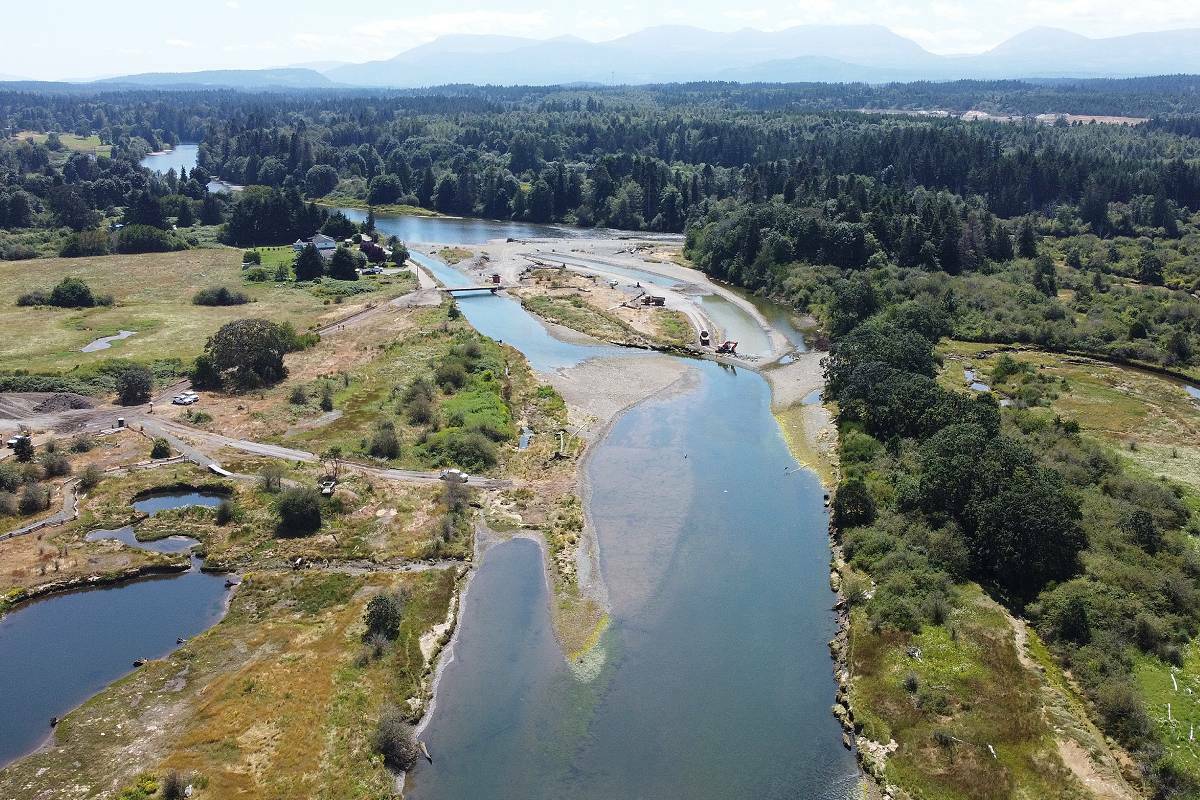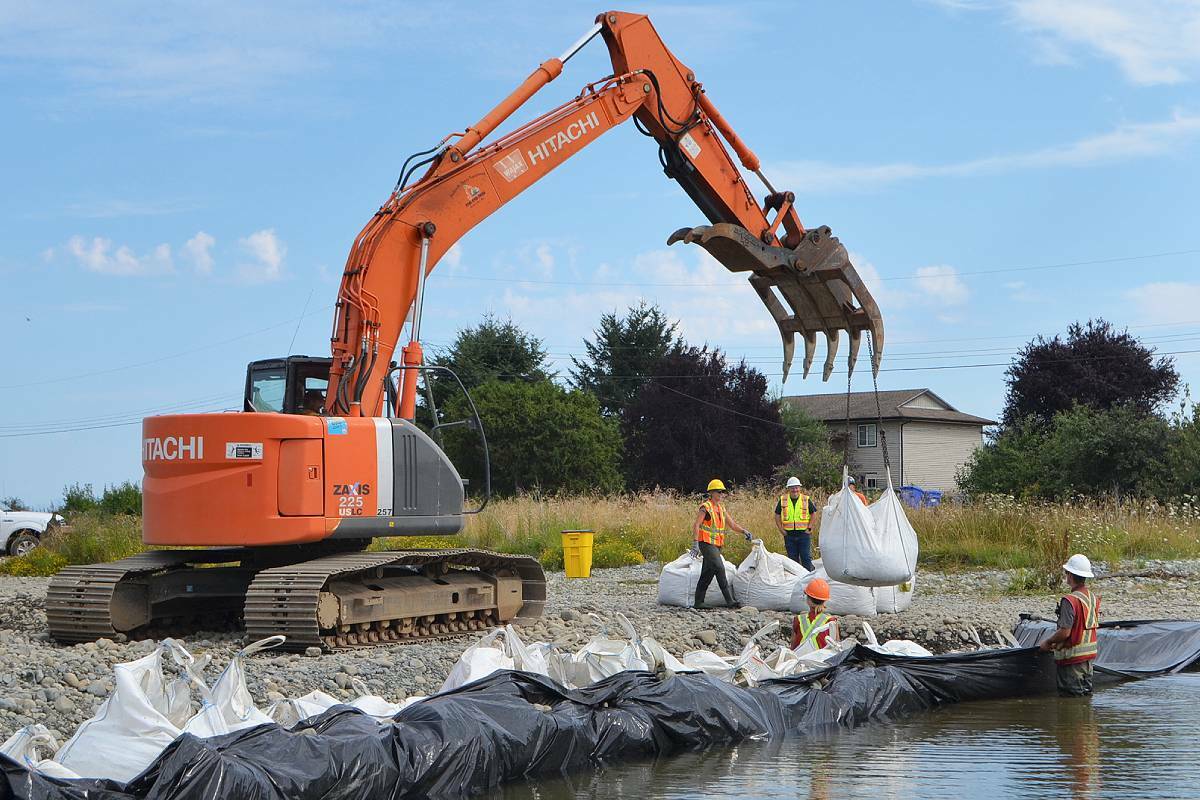Since the beginning of July, there’s been a significant amount of reconstruction activity at the Nanaimo River Estuary.
The estuary has undergone restoration to help build ecosystem resilience, improve quality habitat and provide greater access for wildlife using the area.
Working in partnership, Nature Trust of B.C., their West Coast Conservation Land Management Program, the Department of Fisheries and Oceans and Snuneymuxw First Nation have undergone the arduous task of removing industrial historical land uses from the area and reconnecting an intertidal channel.
“Nanaimo is one part of a larger estuary monitoring and restoration program that we’ve got on several sites on Vancouver Island, the Central Coast and Haida Gwaii,” said Thomas Reid, Nature Trust’s West Coast conservation land manager. “At the Nanaimo site specifically, for quite a few years, we’ve been focused on removing some of these historic anthropogenic or industrial historic land uses that have impacted the natural processes in the estuary and have impacted fish and wildlife habitat, different vegetation, communities, etc.”
In their work over the past few years, Reid said they’ve removed approximately three kilometres of farm berms – raised mounds of earth – from previous agricultural activity in the area. The recent focus, however, has been on reconnecting the intertidal channel to allow greater access for fish and other migratory birds. Reid said the reconnection of the channel, which was also identified by Snuneymuxw elders as a priority, is due partly to a previous mining operation that affected freshwater river flow and created a ‘plug.’
“A fairly significant project that required a fairly significant chunk of capital to do,” Reid said.
Steven Henstra, project manager and restoration biologist, confirmed the completed channel as 14 metres wide from slope to slope, 1.5 metres deep and 330 metres in length.
In selecting Nanaimo as one of the sites for the larger restoration project, Reid said the unnatural gravel deposit made it a top priority, as well as considering the estuary’s resiliency and functionality over time.
Some of the excavated gravel will be reused on another restoration project as spawning habitat for salmon.
As the Nanaimo estuary is just one of several enhancement projects through Nature Trust, funding for the entire five-year project, which could see a potential of 15 sites, was jointly received from the federal and provincial governments for just over $8.5 million, facilitated through the B.C. Salmon Restoration and Innovation Fund.
Following the Nanaimo project, Reid said Nature Trust will continue with restoration work in the Sayward Valley along the Salmon River.
READ MORE: Nature Trust of B.C. protecting nearly 150 acres of rare Gulf Island climate zone
mandy.moraes@nanaimobulletin.com
Like us on Facebook and follow us on Twitter

